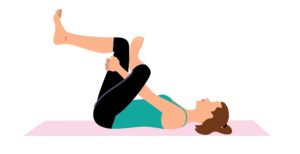While there are many causes of lower back pain, a commonly overlooked cause is the sacroiliac joint. The sacroiliac joint (SIJ) is a commonly underdiagnosed cause of both acute and chronic back pain. This is because the pain is typically located in the lower back and can radiate to the groin and buttock which is also common with hip problems, sciatica or even a pinched nerve.
 Then SIJ is located in the pelvis and connects the base of the spine (sacrum) to the hip bones (ilium). Your SI joint is supported by various muscles and ligaments that let your body transfer energy from your legs to your body when you walk, run or move around. These muscles and ligaments also act as shock absorbers from your lower body and reduce compression on your spine.
Then SIJ is located in the pelvis and connects the base of the spine (sacrum) to the hip bones (ilium). Your SI joint is supported by various muscles and ligaments that let your body transfer energy from your legs to your body when you walk, run or move around. These muscles and ligaments also act as shock absorbers from your lower body and reduce compression on your spine.
There are several potential causes of SI joint pain, but the most common include injury, such as a fall on the buttock, a sudden twist or lifting from a twisted position. Other causes of SIJ pain include osteoarthritis, intense exercise, or biomechanical problems such as an abnormal walking pattern. SI joint pain is also common during pregnancy.
Diagnosis is typically made through history and physical examination by your healthcare provider, and sometimes through a diagnostic injection of anesthetic and steroid to the SIJ. Treatments usually begin with the most conservative and least invasive options first, such as chiropractic care or physical therapy. Manipulation or mobilization of the SIJ in combination with stretching and exercises alleviates most episodes. However, in some patients with resistant cases, sacroiliac injections, or ablations may be necessary.
Stretching the muscles around your SI joint may help reduce pain by relieving tension in your lower back. Doing a few stretches for a couple of minutes each day can be beneficial. It’s important to note that when stretching it’s always better to be too gentle than too aggressive. Stretching too vigorously can worsen your symptoms. Here are a few stretches you can try at home:
 Knee-to-chest:
Knee-to-chest:
- Lie flat on your back on a mat or other comfortable surface.
- While keeping one leg on the floor, grab your other knee and gently pull in toward your chest until you feel a stretch in the back of your leg.
- Hold for a minute and then repeat on the other side.
- If you have trouble reaching your knee you can hook and a yoga strap or light resistance band behind your knee.
 Figure 4 stretch:
Figure 4 stretch:
- Lie on your back on a mat or other comfortable surface with your knees bent and feet flat on the floor.
- Raise your left leg so that your hips and knee are both roughly at a 90-degree angle.
- Raise your right leg and place your ankle just above your left knee.
- Gently pull your left leg towards your chest until you feel a stretch.
- Hold for a minute and repeat on the other side.
 Trunk rotation stretch:
Trunk rotation stretch:
- Lie on your back on a mat or other comfortable surface with your knees bent and feet flat on the floor.
- Stretch your arms out to your sides in a T-position. Your knees should be together and pointed towards the ceiling.
- While keeping your knees together, twist to one side as far as you comfortably can. Stop immediately if your lower back starts to hurt.
- Switch to the other side and perform a few twists on each side.
 Quad stretch:
Quad stretch:
- Stand tall with your hips shoulder-width apart.
- Hold onto a sturdy chair or wall if you need help balancing.
- Grab your left ankle and gently pull your foot towards your buttocks with your knee pointing down. Don’t force your heel to your butt – just bring it as close as your comfortably can to feel a light stretch.
- Hold for a minute and repeat on the other side.
In addition to regular stretching here are some other ways to help reduce or prevent SI joint pain:
- Use proper lifting techniques
- Maintain good posture while sitting, standing and sleeping
- Regular exercise and stretching/strengthening
- Set up an ergonomic work area
- Eat a healthy diet and drink plenty of water
- Learn how to effectively manage stress
- Don’t smoke
If you are dealing with SI joint pain that does not improve with rest and gentle stretching you should seek professional medical assistance. Your doctor may recommend chiropractic care or physical therapy so a custom stretching and strengthening program can be tailored to you to help manage your pain.
David J. BenEliyahu, DC, DAAPM, DABCSP is the Administrative Director of the Back & Neck Pain Center at Mather Hospital.

